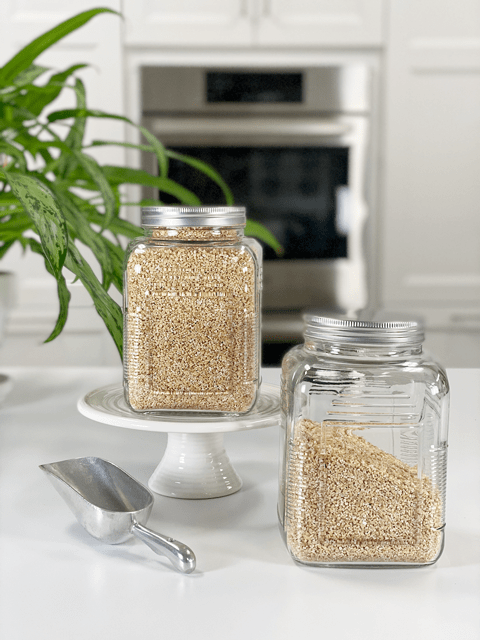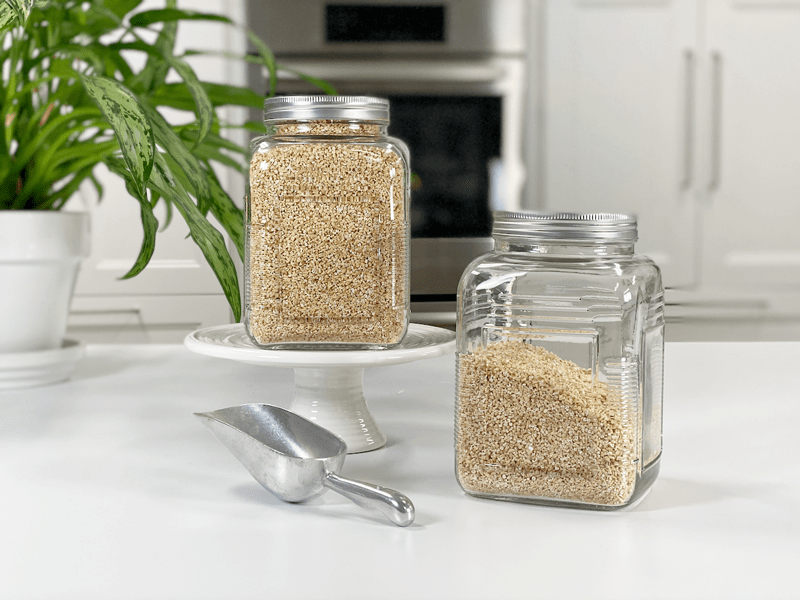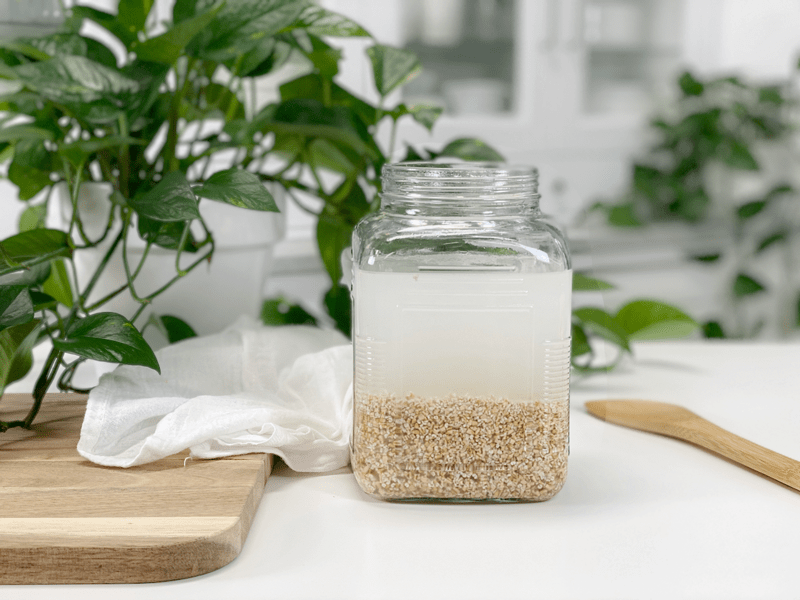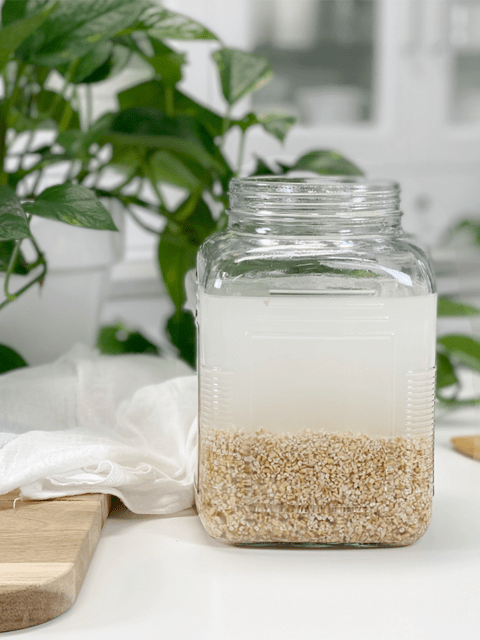


 Add to favorites
Add to favorites
Steel-cut oats are an excellent source of soluble fiber that also acts as a prebiotic food, which, in turn, feeds the friendly bacteria in your gut. The ripple effect is that it turns around and helps the gut bacteria produce nutrients for your colon cells and leads to a healthier digestive system. Without a healthy digestive system, we can’t take in all the nutrients that we need. So let’s learn to make every bite count!

Another reason that I love steel-cut oats is that they are less processed than old-fashioned rolled oats, which means that they have a lower glycemic index. The reason for this difference is that it takes longer for digestive enzymes to reach the starch inside the thicker pieces, slowing down their conversion to sugar. So if you want a bowl of oats that will keep you satiated and dole out a steady flow of energy…well, you just might want to give steel-cut oats a try.
Although oats are naturally gluten-free, they are typically grown alongside grains such as wheat and barley, which contain gluten, which is why many people with gluten intolerance cannot eat them. However, pure, uncontaminated, certified gluten-free oats can usually be tolerated by those with celiac disease. So, be sure to look for “gluten-free” on the bag when purchasing them. But it’s important to know that oats contain a protein called avenin, which can trigger an immune response similar to that of gluten in some people with celiac disease. So, please proceed with caution if gluten is an issue for you.
Never heard of that before? Not sure what it even means? Most of the carbs you consume, such as those in grains, pasta, and potatoes, are starches. Some types of starch are resistant to digestion, hence the term resistant starch. Resistant starch functions similarly to soluble, fermentable fiber, helping feed the friendly bacteria in your gut and increasing the production of short-chain fatty acids like butyrate. Studies have shown that it can help with weight loss and benefit heart health, as well as improve blood sugar control, insulin sensitivity, and digestive health (1, 2, 3).
To benefit from resistant starches, proper preparation is key. I start by soaking, followed by cooking. After cooling in the fridge, I gently warm them when ready to eat (they’re also good cold, if you prefer that).

There’s nothing better than a nice soak, and your oats and digestive tract will thank you for it! The main reason I soak oats is to reduce phytic acid, which blocks the digestive enzymes in the body. It also binds to essential minerals like iron, zinc, and calcium, making them difficult to absorb.
There are some health benefits to phytic acid, so don’t go using it as a curse word, but there are times when we can get too much in the body. If you eat a lot of foods that are high in phytic acid (nuts, grains, seeds, fresh produce, etc.), you suffer from digestive issues, or you have mineral imbalances…then you might want to seriously start soaking some of your ingredients before cooking/eating them. I have a whole section on the site called “Soaking Nuts, Seeds, and Grains.” There is a lot to learn if you want to take your eating patterns to a whole new level—but please, do not stress over it! Let me help guide you with grace and ease.
 Ingredients
Ingredients
Hi, your website is amazing I’ve been reading through it all day, no joke! I was wondering a few things. One is can steel cut oats be grinded into oat flour? Can I grind oats into flour and then do the soaking process with milk instead of water so I could use it for say a pancake recipe so I don’t have to dehydrate or can oats only be soaked in water? Also do you have detailed posted on whole wheat flour and soaking I can’t seem to find anything on whole wheat flour? Thank you so much in advanced:)
Good day, Jasmine,
I am glad that you are enjoying the site. I get lost reading and looking through it myself. haha Let’s see if I can answer your questions:
Q. Can steel-cut oats be ground into oat flour?
A. Yes, they will take longer to grind down because they are denser than let’s say, rolled oats.
Q. Can I grind oats into flour and then do the soaking process with milk instead of water?
A. Yes, you can grind the oats to flour, then use. Freshly ground flour has more nutrients than store-bought. Once you have turned it into flour you will want to add an acid medium for effective soaking; yogurt, buttermilk, lemon juice, apple cider vinegar, whey, milk kefir, and coconut kefir. Note that all dairy needs to be cultured to make it more effective. If soaking flour for recipes like pancakes, muffins, or quick breads, add the liquids (water, oils, sweetener) and flour together in a glass bowl and 1 tbsp of acidic medium for every 1 cup of liquid used. Cover and allow to soak overnight. Proceed with the recipe in the morning by adding the remaining ingredients and cook as normal.
Q. Do you have detailed posted on whole wheat flour?
A. No, I don’t have anything regarding whole wheat flour. Our household is gluten-free so it’s an ingredient that I ever use.
I hope this helped. blessings, amie sue :)
Haha your website truly is so engaging . I really wish I had the time to do all these soaking and sprouting grains and such. I Wish I could try all your recipes they look and sound amazing! Thank you so much for responding to all my questions it was so helpful. It can really be hard to find answers and confusing when websites have different information. I am so glad I can soak my flour without having to go through the dehydration process. Thank you so much, Jasmine :)
You are so welcome Jasmine and again… I am thrilled that you are enjoying the site. I have put countless hours into it and I enjoy it just as much as you. :) The Internet is very confusing and overwhelming. I used to let it take that control of me, but I don’t anymore. You really have to do your own research and when looking for scientific answers you have to watch the source. Anyway, enjoy and let me know what recipes you try. blessings, amie sue
Sorry me again:) from my research it seems that the addition of an acid neutralizes the phytic acid therefore the soaked grains do not need to be rinsed to reduce the phytic acid. I would love to know what you think about this since I’ve read that u believe in order to reduce the phytic acid u should rinse because it is probably leaked in the water. Can wait wait to hear back!
Hello Jasmine. No apologies needed. I am here to help whenever I can! I personally rinse all my grains after soaking as indicated. I really don’t have much more to add outside of what I already shared. It is what I was taught in raw culinary school over 10 years ago and that has been my practice ever since. blessings, amie sue
Makes complete sense thank you for answering :)
Hi.
I’m new to using steel cut oats. Once you’ve soaked the steel cut oats can you then dry them in a dehydrator and store until ready for use (like other oat types)? If so what temperature and time would you recommend?
Good day Helen,
Yes, you can dehydrate soaked steel-cut oats.
Dehydrating soaked steel cut oats:
1. Make sure to drain and rinse the oats really well, draining out as much of the liquid as possible.
2. Spread the oats out on the teflex sheets that come with the dehydrator and dry at 145 degrees (F) for 1 hour, then reduce 115 degrees (F) for 4-8 hours or until dry.
Do not use wax paper, as it will stick. Parchment is good.
3. Store in an airtight container.
4. When ready to use, cook as normal.
I hope this was helpful. Blessings, amie sue
Hi! I use steel cut parts for my granola, so baked up to half an hour, does baking help with the break down without soaking? Thank you for your time.
Hello Kimberley,
Baking does cut down on some of the phytic acid. If you want a bigger bang for your buck… I would soak prior to baking, but that is totally up to you. blessings, amie sue